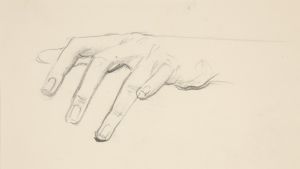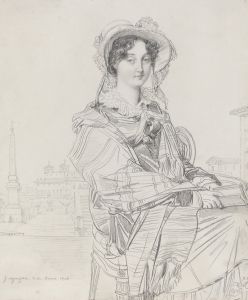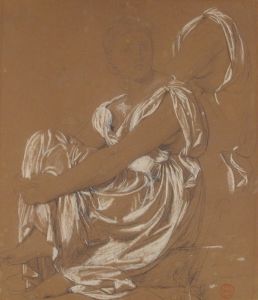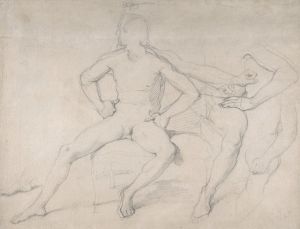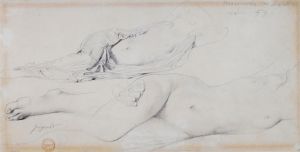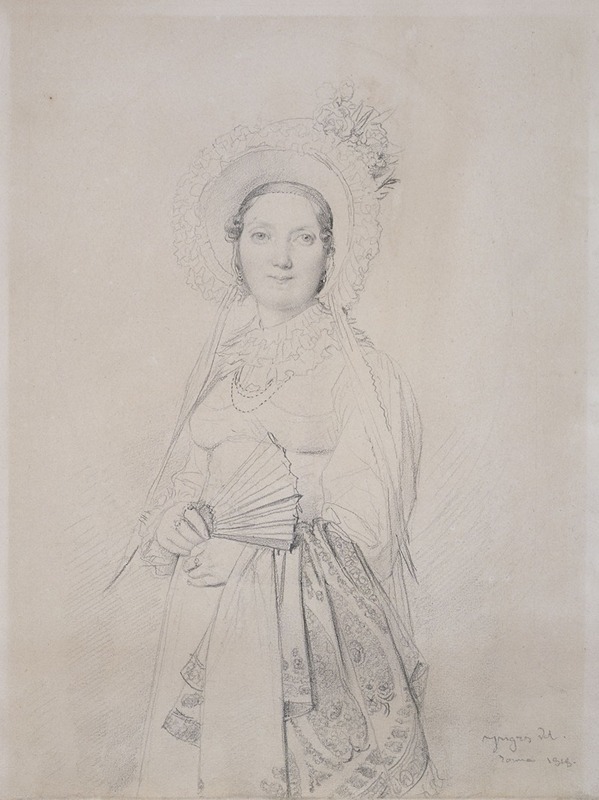
Madame Lavergne
A hand-painted replica of Jean Auguste Dominique Ingres’s masterpiece Madame Lavergne, meticulously crafted by professional artists to capture the true essence of the original. Each piece is created with museum-quality canvas and rare mineral pigments, carefully painted by experienced artists with delicate brushstrokes and rich, layered colors to perfectly recreate the texture of the original artwork. Unlike machine-printed reproductions, this hand-painted version brings the painting to life, infused with the artist’s emotions and skill in every stroke. Whether for personal collection or home decoration, it instantly elevates the artistic atmosphere of any space.
"Madame Lavergne" is a portrait painting by the renowned French Neoclassical artist Jean Auguste Dominique Ingres. Created in 1820, this artwork exemplifies Ingres' meticulous attention to detail and his skill in capturing the essence of his subjects through portraiture.
Jean Auguste Dominique Ingres (1780-1867) was a prominent figure in the Neoclassical movement, known for his precise draftsmanship and his ability to convey the textures and subtleties of his subjects' appearances. Ingres was a student of Jacques-Louis David, another leading Neoclassical painter, and he carried forward his mentor's emphasis on clarity, order, and idealized beauty.
The subject of the painting, Madame Lavergne, is depicted with a serene and composed expression, characteristic of Ingres' portrait style. She is portrayed in a seated position, with her body slightly turned to the side, allowing for a three-quarter view of her face. This pose not only adds depth to the composition but also highlights the sitter's elegant posture and refined demeanor.
Ingres' use of light and shadow in "Madame Lavergne" is masterful, creating a sense of volume and three-dimensionality. The delicate rendering of Madame Lavergne's skin, the intricate details of her clothing, and the subtle play of light on her face all contribute to the lifelike quality of the portrait. Ingres was known for his ability to capture the textures of different materials, and this is evident in the way he has depicted the fabric of Madame Lavergne's dress and the softness of her skin.
The background of the painting is kept relatively simple, with muted tones that do not distract from the sitter. This approach is typical of Ingres' portraits, where the focus is firmly on the subject rather than the surroundings. The simplicity of the background also serves to enhance the elegance and poise of Madame Lavergne.
"Madame Lavergne" is a testament to Ingres' skill as a portraitist and his dedication to the principles of Neoclassicism. The painting reflects his belief in the importance of line and form, as well as his commitment to capturing the inner character of his subjects. Ingres' portraits are often noted for their psychological depth, and "Madame Lavergne" is no exception, conveying a sense of the sitter's personality and presence.
Today, "Madame Lavergne" is held in high regard as an example of Ingres' portraiture and his contribution to the Neoclassical movement. The painting is part of the collection at the Musée Ingres in Montauban, France, which houses many of the artist's works and personal belongings. The museum provides valuable insight into Ingres' life and career, offering visitors the opportunity to appreciate his artistic achievements and his influence on the development of 19th-century art.
In summary, "Madame Lavergne" by Jean Auguste Dominique Ingres is a distinguished portrait that showcases the artist's technical prowess and his ability to convey the essence of his subjects. Through his meticulous attention to detail and his commitment to the ideals of Neoclassicism, Ingres has created a timeless work that continues to be admired and studied by art enthusiasts and scholars alike.










